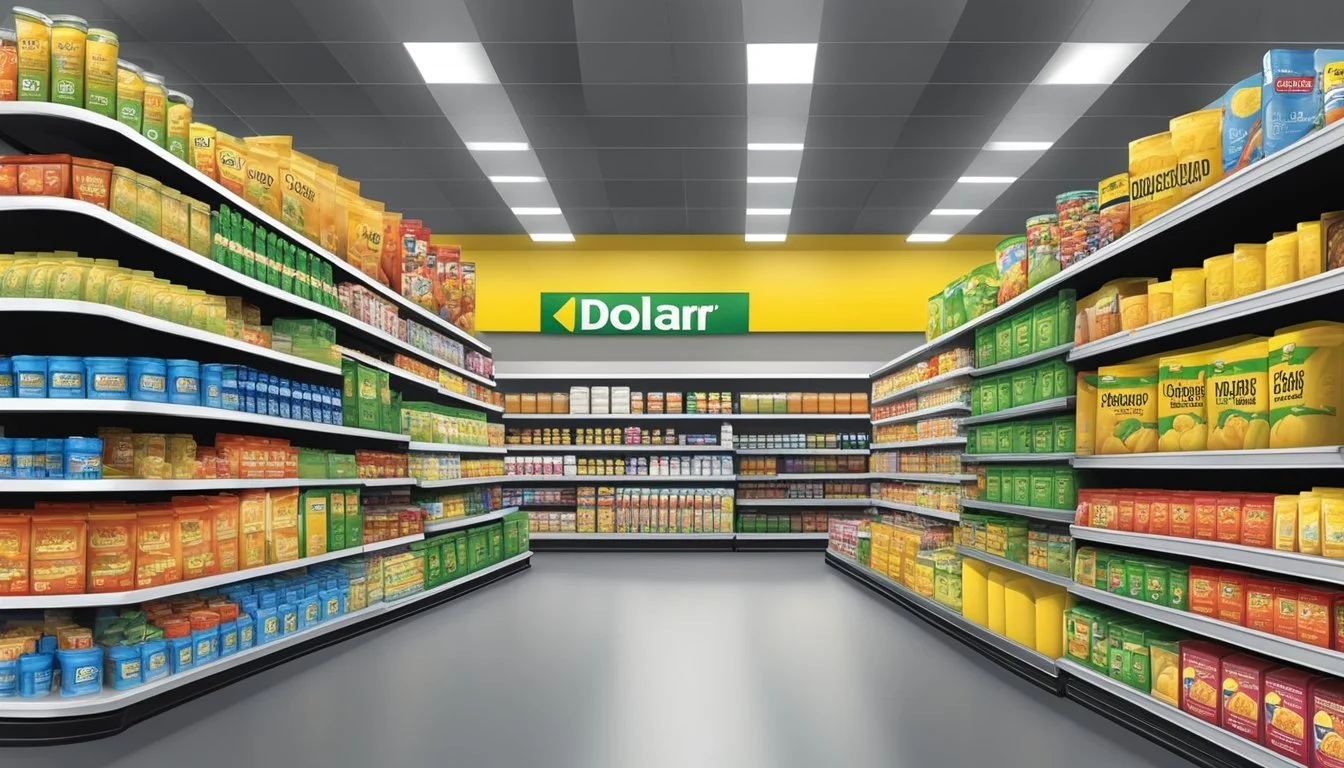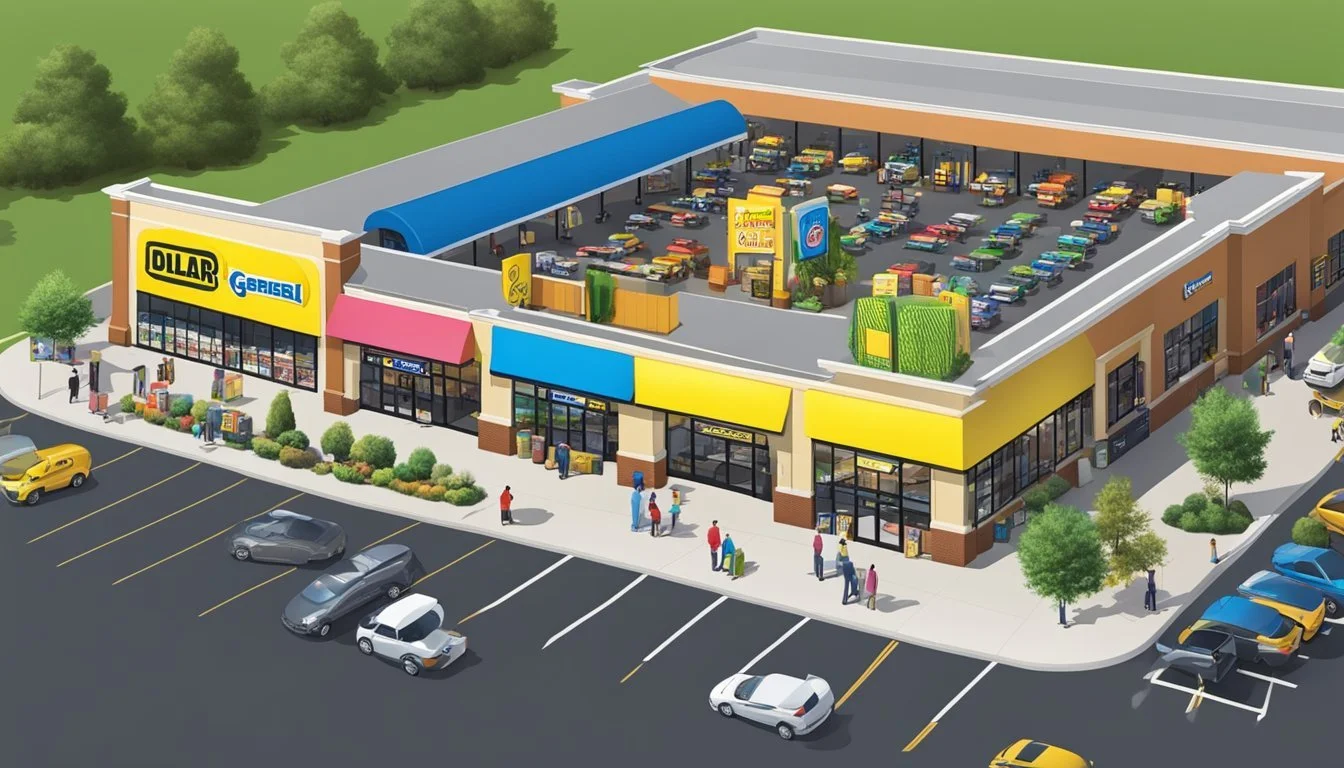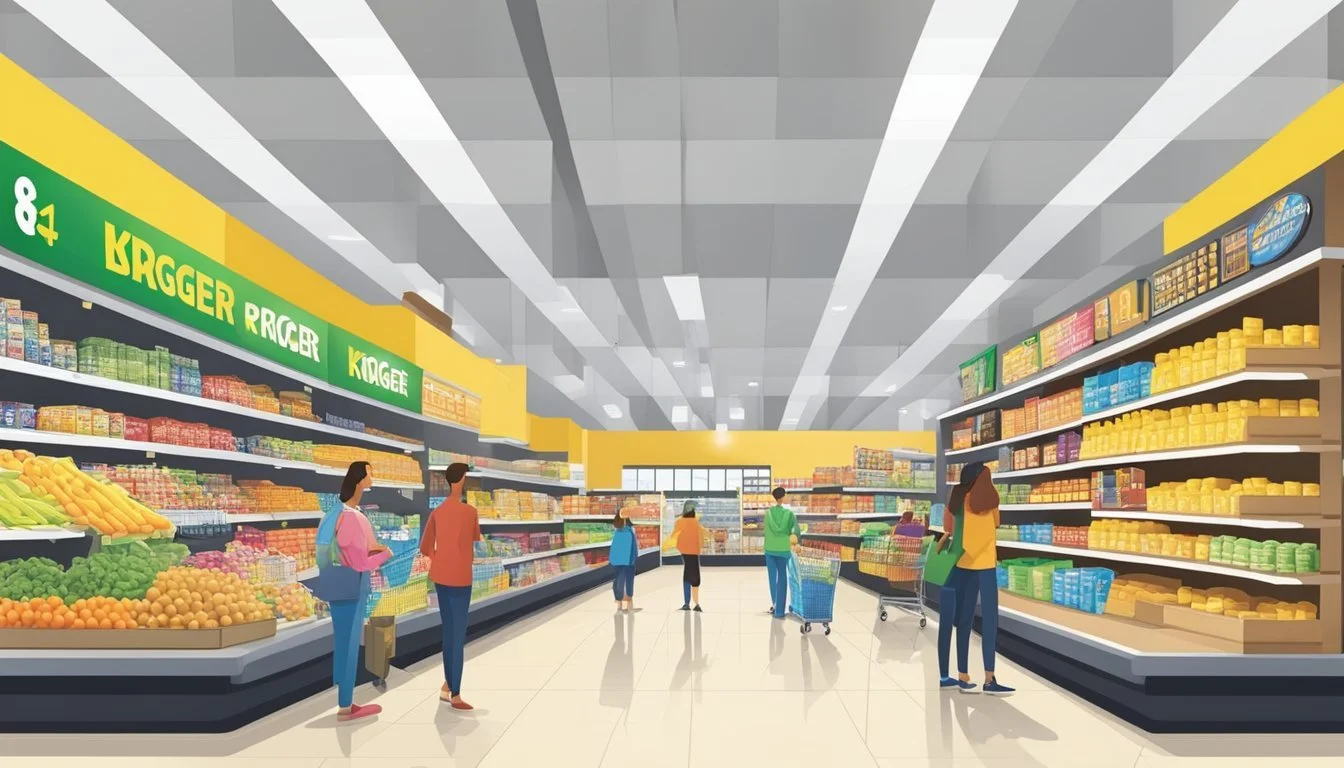Dollar General vs Kroger
A Price and Quality Comparison
Dollar General and Kroger represent two distinct approaches to grocery shopping in the United States. While both aim to provide affordable options for consumers, they cater to different market segments and offer varying product selections.
Dollar General focuses on smaller-format stores in rural and urban areas, offering a mix of groceries and household items at budget-friendly prices. Kroger, on the other hand, operates as a full-service supermarket chain with larger stores and a wider range of products, including fresh produce, meats, and bakery items. Kroger typically provides better overall value for grocery shoppers, especially for those seeking organic produce and a broader selection of fresh foods.
The choice between Dollar General and Kroger often depends on individual needs, location, and shopping preferences. Dollar General may be more convenient for quick purchases or in areas where larger supermarkets are scarce. Kroger appeals to customers looking for a comprehensive grocery shopping experience with competitive prices across a wider range of products.
Company Profiles
Dollar General and Kroger are major players in the U.S. retail grocery landscape. Both companies have distinctive histories and growth trajectories that have shaped their market positions today.
History and Expansion of Dollar General
Dollar General began in 1939 as a wholesale business in Kentucky. The company opened its first retail store in 1955, focusing on offering products for $1 or less. Over the decades, Dollar General expanded rapidly across rural and suburban areas.
By 2024, Dollar General operates over 18,000 stores across 47 states. The company's growth strategy targets underserved communities, often in areas with populations under 20,000. Dollar General stores are typically smaller format, carrying a mix of groceries, household items, and seasonal merchandise.
Dollar General has adapted its model in recent years, introducing more fresh produce and expanding its private label offerings. The company's headquarters is located in Goodlettsville, Tennessee.
Kroger's Market Presence and Growth
Kroger was founded in 1883 in Cincinnati, Ohio, where it maintains its headquarters. The company grew from a single grocery store to become one of the largest supermarket chains in the United States.
Kroger operates nearly 2,800 stores across 35 states under various banners, including Kroger, Ralphs, and Fred Meyer. The company has pursued a strategy of regional acquisitions, allowing it to maintain strong local presence while expanding its national footprint.
In recent years, Kroger has invested heavily in e-commerce and digital initiatives. The company has also expanded its private label offerings and emphasized fresh, organic, and locally sourced products to compete with both traditional supermarkets and discount retailers.
Product Range and Quality
Dollar General and Kroger offer distinct product selections to cater to different customer needs. Each retailer's approach to quality and variety shapes their overall shopping experience.
Dollar General's Product Offerings
Dollar General focuses on providing affordable essentials. Their stores stock a limited range of food items, including canned goods, packaged snacks, and basic dairy products. Fresh produce is available in select locations, but the selection is often minimal.
Dollar General carries frozen foods, beverages, and a variety of household and personal care items. Their private label brands offer budget-friendly alternatives across multiple categories. The retailer emphasizes convenience and value, prioritizing everyday necessities over specialty or gourmet options.
Kroger's Selection of Goods
Kroger boasts a comprehensive product range typical of full-service supermarkets. Their stores feature extensive fresh produce sections, meat and seafood counters, and well-stocked dairy departments. Kroger's bakery and deli offerings provide ready-to-eat options and specialty items.
The retailer's pantry selection includes a wide array of national brands and Kroger's own private label products. Simple Truth, Kroger's organic and natural brand, caters to health-conscious shoppers. Kroger stores typically offer a broader selection of frozen foods, international cuisine items, and specialty dietary products compared to Dollar General.
Pricing Strategies
Dollar General and Kroger employ distinct pricing approaches to attract and retain customers. Both aim to offer value, but their strategies differ in key ways.
Evaluating Dollar General's Pricing
Dollar General focuses on providing low prices across a limited product range. Their stores stock items priced 20% to 40% below full-price retailers, with most products under $10. This strategy appeals to budget-conscious shoppers seeking everyday essentials at competitive rates.
However, recent data suggests Dollar General has increased food prices more aggressively than some competitors. A Bank of America analysis found that Dollar General hiked food prices more than Walmart and Kroger in certain markets. This shift may impact its perception as a low-cost leader.
Dollar General maintains its pricing edge through efficient operations. No-frills stores, minimal staffing, and a curated product selection help keep costs down. These savings are then passed on to customers in the form of lower shelf prices.
Kroger's Pricing and Value Proposition
Kroger adopts a more nuanced pricing strategy. While not always the cheapest option, Kroger aims to provide overall value through a combination of competitive pricing, quality products, and customer rewards.
The retailer offers a mix of national brands and private label items, allowing customers to choose based on their budget and preferences. Kroger's loyalty program provides personalized discounts and fuel points, enhancing the value proposition for regular shoppers.
Price comparisons show Kroger is often more expensive than Walmart but cheaper than many traditional supermarkets. A CBS News report found Kroger's prices to be higher than Walmart's but still competitive in the broader grocery market.
Kroger also uses data-driven pricing strategies to adjust prices based on local competition, demand, and other factors. This dynamic approach helps Kroger balance profitability with customer value perceptions.
Location and Accessibility
Dollar General and Kroger have distinct approaches to store locations and accessibility. Their strategies impact how easily customers can reach their stores and the types of communities they serve.
Store Distribution and Accessibility
Dollar General focuses on rural and suburban areas, often in small towns with limited retail options. The company operates over 18,000 stores across 47 states, prioritizing locations within a 5-mile radius of their target customers. This approach makes Dollar General highly accessible to rural populations.
Kroger, on the other hand, has a stronger presence in urban and suburban areas. With approximately 2,700 stores in 35 states, Kroger operates under various banners including Fred Meyer, Ralphs, and King Soopers. The company's stores are typically larger, offering a wider selection of products.
Dollar General's smaller store format allows for quicker openings and lower operating costs. This enables the chain to serve communities too small for larger supermarkets. Kroger's larger stores provide more amenities like pharmacies and fuel centers, but require higher population densities to be viable.
Customer Experience and Services
Dollar General and Kroger offer distinct shopping experiences and services tailored to different customer needs. Both retailers strive to provide value and convenience, but their approaches differ significantly.
Shopping Experience at Dollar General
Dollar General focuses on a no-frills shopping environment. Stores are typically smaller, with a straightforward layout designed for quick trips. Aisles are stocked with a mix of name-brand and private-label products at discounted prices.
The retailer emphasizes affordability, with many items priced at $1 or less. This pricing strategy attracts budget-conscious shoppers looking for everyday essentials.
Dollar General's app offers digital coupons and a cart calculator to help customers track spending. The company has also introduced DG Pickup for online orders at select locations.
Service Offerings at Kroger Stores
Kroger provides a more comprehensive grocery shopping experience. Stores are larger, offering a wide selection of fresh produce, meats, and bakery items alongside packaged goods.
The retailer invests heavily in technology to enhance customer service. Kroger's app allows for digital coupon clipping, personalized deals, and contactless payments.
Kroger has expanded its delivery and pickup services, with many locations offering same-day options. The company's loyalty program, Kroger Plus, provides fuel discounts and personalized offers based on shopping habits.
In-store services often include pharmacies, banking, and Starbucks cafes, creating a one-stop shopping destination for customers.
Financial Performance and Market Perception
Dollar General and Kroger have distinct financial profiles and market positions. Their revenue streams, profitability metrics, and consumer perceptions offer insights into their competitive standing in the grocery retail sector.
Revenue and Profitability Analysis
Dollar General reported net sales of $37.8 billion in fiscal year 2023, a 10.6% increase from the previous year. The company's operating profit reached $3.3 billion, representing an 8.7% margin. Kroger, on the other hand, generated sales of $148.3 billion in fiscal year 2023, with an operating profit of $3.1 billion, yielding a 2.1% margin.
Dollar General's smaller store format and focus on rural areas contribute to its higher profit margins. Kroger's larger scale provides advantages in purchasing power and distribution efficiency.
A Bank of America study found that Dollar General has raised food prices more aggressively than competitors like Kroger and Walmart. This pricing strategy may impact future revenue growth and customer loyalty.
Brand Value and Consumer Perception
Dollar General is perceived as a convenient, low-cost option for everyday essentials. Its brand resonates strongly with price-sensitive consumers in rural and suburban areas. The retailer's rapid expansion has increased its visibility and market presence.
Kroger's brand is associated with a wider product selection and higher-quality fresh foods. Its private label offerings have gained popularity, enhancing customer loyalty. Kroger's investments in e-commerce and digital platforms have improved its perception as a modern, tech-savvy retailer.
Consumer surveys indicate that while Dollar General leads in price perception, Kroger scores higher in product quality and shopping experience. This difference in brand perception influences customer choice and shopping patterns between the two retailers.
Comparative Advantage
Dollar General and Kroger each have unique strengths in the grocery market. Their differing approaches to pricing, product selection, and economic adaptability shape their competitive positions.
Cost-Efficiency and Deals
Dollar General focuses on providing low prices across a limited product range. Their smaller store formats and streamlined inventory management contribute to operational efficiency. This allows them to offer consistently competitive prices on everyday essentials.
Kroger, in contrast, leverages its larger scale to negotiate better deals with suppliers. They frequently run promotions and offer digital coupons through their loyalty program. Kroger's private label brands provide budget-friendly alternatives to name brands.
Both chains have adapted to inflationary pressures differently. Dollar General has increased food prices more aggressively than some competitors. Kroger has worked to absorb some cost increases to maintain customer loyalty.
Quality and Variety Comparisons
Kroger offers a wider product selection, including fresh produce, meats, and bakery items. Their stores stock national brands alongside an extensive range of private label options. This variety caters to diverse customer preferences and dietary needs.
Dollar General's inventory is more limited, focusing on shelf-stable goods and household essentials. While they have expanded their fresh and frozen food offerings in recent years, the selection remains narrower than traditional supermarkets.
Quality perceptions vary between the two retailers. Kroger generally receives higher marks for produce freshness and overall product quality. Dollar General emphasizes value, with quality that meets basic needs at lower price points.
Impact of Inflation and Economic Factors
Inflation has affected both chains' pricing strategies. Dollar General has faced criticism for price hikes that outpace some competitors. Their smaller package sizes can mask total cost increases.
Kroger has implemented more gradual price adjustments. They've emphasized value through expanded promotions and loyalty program perks to retain price-sensitive customers.
Economic downturns tend to benefit Dollar General as consumers trade down to lower-priced options. Kroger's diverse product mix allows them to capture both budget-conscious shoppers and those seeking higher-end items.
Both retailers have invested in e-commerce and pickup services to meet changing consumer preferences. These initiatives aim to provide convenience while managing costs in an inflationary environment.
Sustainability and Social Responsibility
Kroger and Dollar General have distinct approaches to sustainability and social responsibility. Their practices impact environmental stewardship and employee welfare in different ways.
Environmental Practices and Sustainability Goals
Kroger has made significant strides in environmental sustainability. The company aims to eliminate food waste by 2025 through its Zero Hunger | Zero Waste initiative. Kroger has achieved 100% store participation in food rescue programs, donating unsold food to local communities.
The grocer also focuses on reducing its carbon footprint. It has set targets to lower greenhouse gas emissions and increase energy efficiency in its stores and distribution centers.
Dollar General's sustainability efforts are less publicized. The company has implemented some energy-saving measures in its stores, such as LED lighting and more efficient HVAC systems.
Labor Environment and Employment Practices
Kroger offers competitive wages and benefits to its employees. The company provides health insurance, retirement plans, and tuition reimbursement programs. Kroger has also invested in employee training and development initiatives.
Labor unions represent many Kroger workers, which can lead to better working conditions and job security. The company has faced some criticism over wage disputes but generally maintains positive labor relations.
Dollar General's labor practices have faced more scrutiny. The company has been involved in legal disputes over wage and hour violations. Critics argue that Dollar General's low-cost model can lead to understaffing and high employee turnover.
Both retailers offer entry-level jobs and opportunities for advancement, but Kroger's larger size may provide more diverse career paths.
Conclusion
Dollar General and Kroger serve different consumer needs in the grocery market. Dollar General focuses on convenience and low prices, with smaller stores in more locations. Kroger offers a wider selection and higher-quality products in larger supermarket formats.
Price-conscious shoppers may find better deals at Dollar General, especially on packaged goods and household items. However, Kroger typically has lower prices on fresh produce and a broader range of organic options.
For weekly grocery shopping, Kroger provides a more comprehensive experience. Its stores carry a full assortment of foods, including specialty items and prepared meals. Dollar General is better suited for quick trips and basic necessities.
Convenience is Dollar General's strong suit, with over 18,000 locations nationwide. Kroger has fewer stores but offers online ordering and delivery services in many areas.
Both chains have strengths in different areas. The best choice depends on individual shopping habits, budget priorities, and location. Many consumers may benefit from using both stores strategically to maximize savings and convenience.







